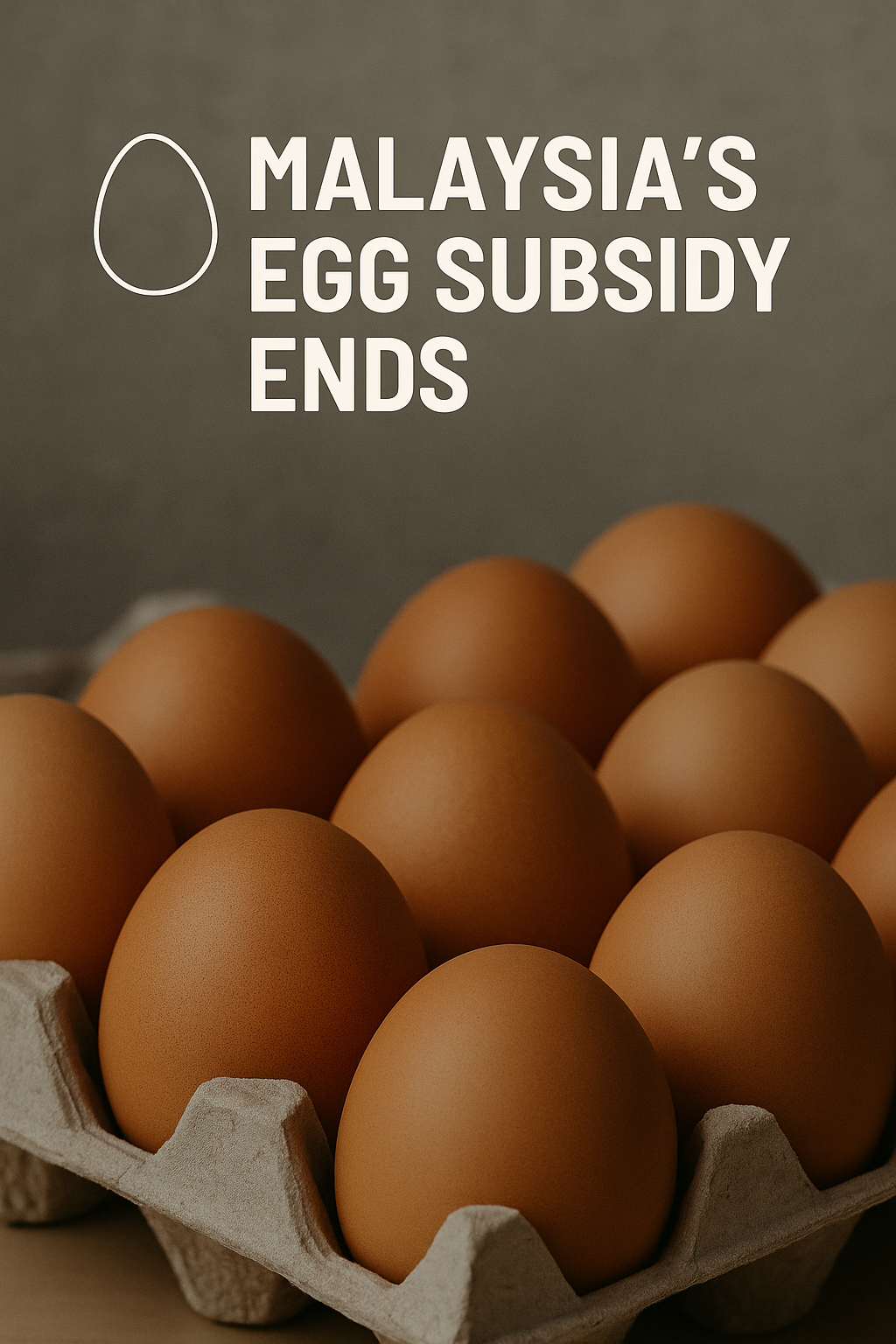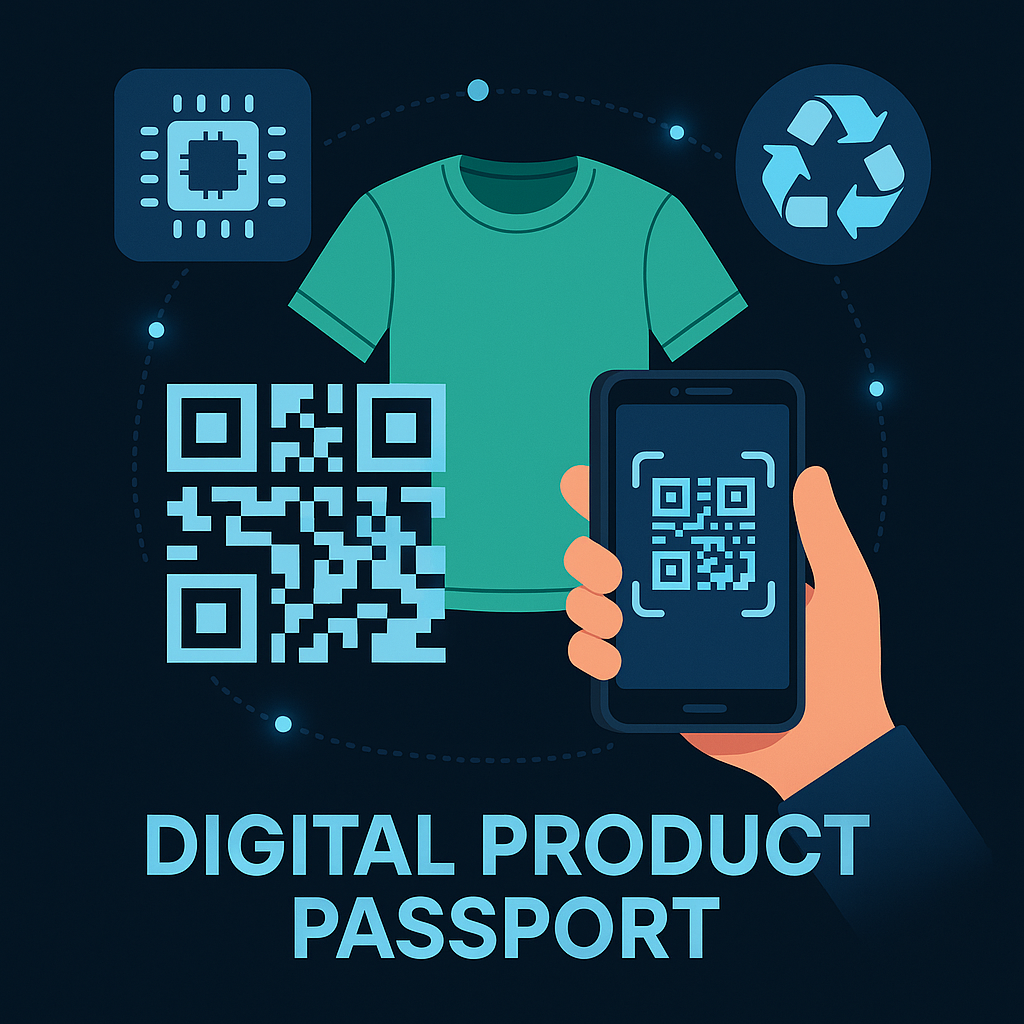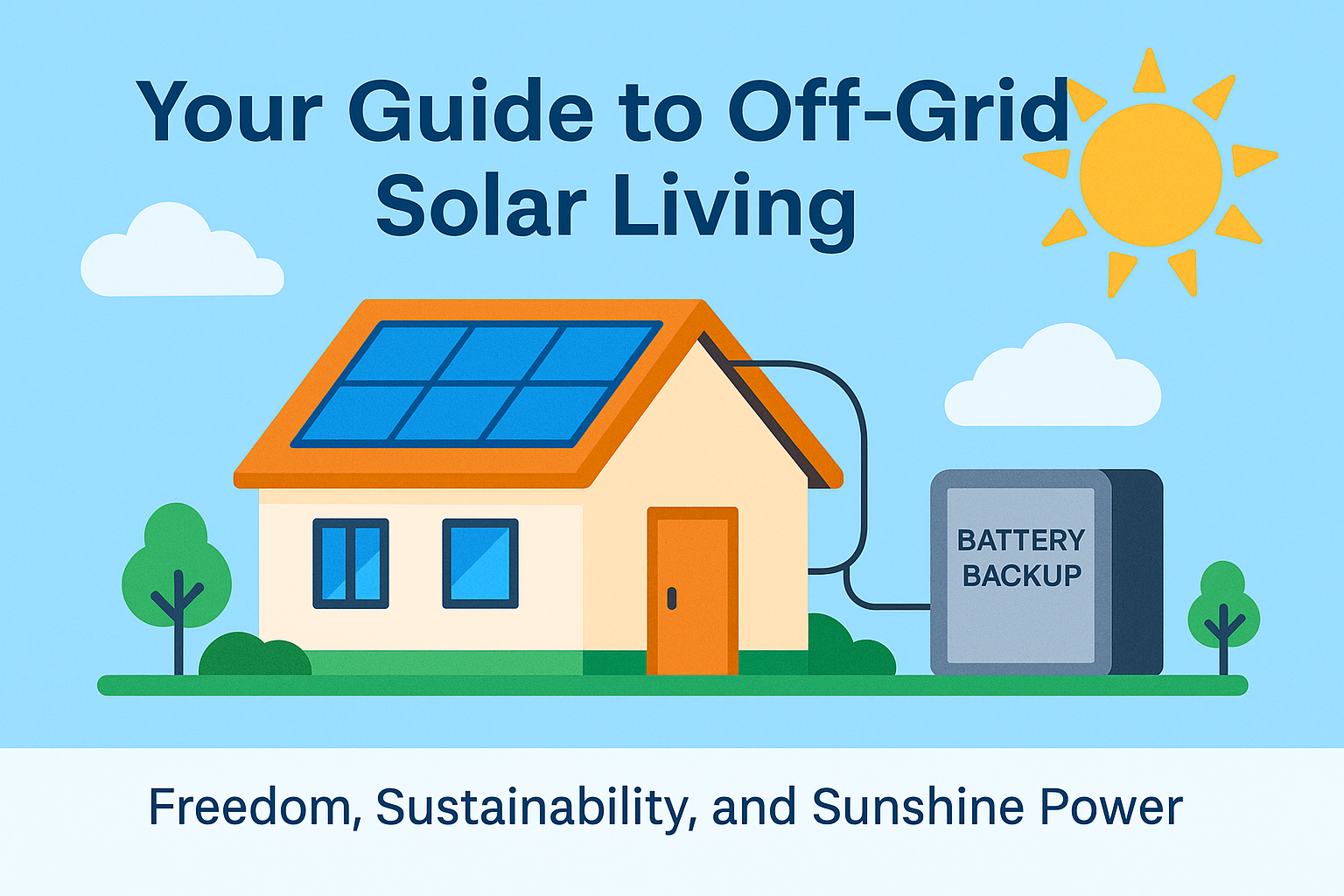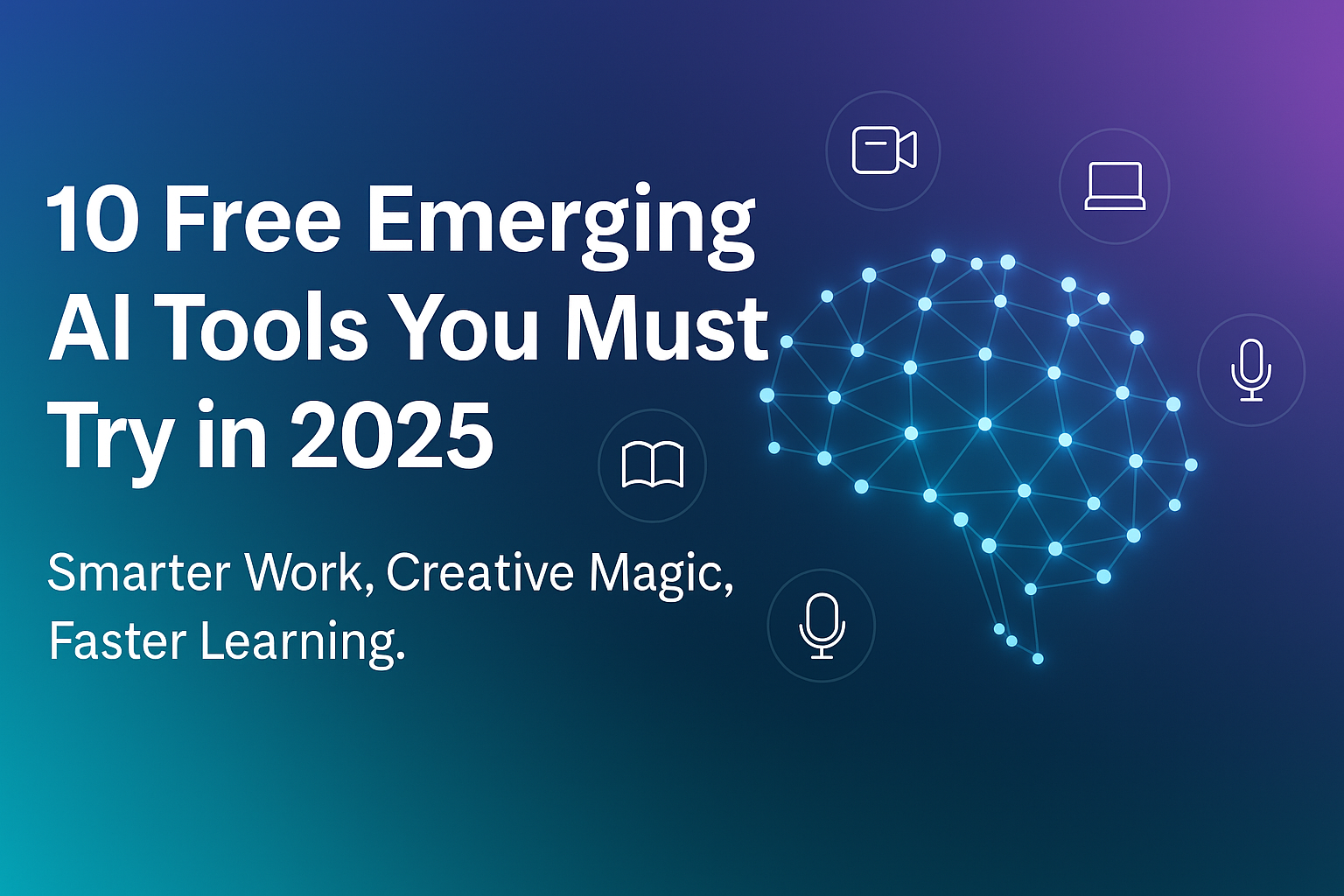Your cart is currently empty!
Pengarang: wellwxyz

Empowering the Future: How AI is Revolutionizing Renewable Energy
Artificial Intelligence (AI) is no longer just a buzzword in tech circles; it’s rapidly becoming a cornerstone in the renewable energy sector. From optimizing energy production to enhancing grid stability, AI’s integration into renewable energy systems is paving the way for a more sustainable and efficient future.
Harnessing AI for Renewable Energy Optimization
The variability of renewable energy sources like solar and wind presents challenges in consistent energy supply. AI addresses this by providing advanced forecasting and optimization techniques:
- Predictive Analytics: AI algorithms can forecast energy production based on weather patterns, allowing for better planning and integration into the power grid. The Verge
- Grid Management: AI enhances grid stability by predicting demand and adjusting supply accordingly, ensuring a balanced and reliable energy distribution. Clean Energy Forum
- Maintenance Optimization: Through predictive maintenance, AI identifies potential equipment failures before they occur, reducing downtime and maintenance costs. Omdena
Real-World Applications and Innovations
Several companies and initiatives are at the forefront of integrating AI into renewable energy:
- Exowatt: This startup has developed a modular energy platform that captures solar energy, stores it thermally, and dispatches electricity on demand. Their system aims to provide a reliable power source for AI-driven data centers. Wikipedia
- Capalo AI: Based in Finland, Capalo AI utilizes AI to enhance energy storage efficiency. Their platform predicts renewable energy generation and consumption, optimizing battery operations for better grid integration. Business Insider
- GridBeyond: This company employs AI-powered systems to balance electricity supply and demand, aiding businesses in managing energy consumption and integrating renewable sources like solar panels and batteries. WSJ
The Broader Impact of AI on Energy Transition
AI’s role extends beyond individual applications, influencing broader energy strategies:
- Accelerating Clean Energy Adoption: AI facilitates the integration of renewable energy into existing grids, reducing reliance on fossil fuels and promoting sustainability.
- Policy and Investment: Governments and organizations are recognizing AI’s potential, leading to increased funding and supportive policies aimed at accelerating the clean energy transition. The Verge
- Global Competitiveness: Nations investing in AI-driven renewable energy technologies are positioning themselves as leaders in the emerging green economy.
Looking Ahead: Challenges and Opportunities
While AI offers significant benefits, challenges remain:
- Data Privacy and Security: As AI systems rely on vast amounts of data, ensuring the privacy and security of this information is paramount.
- Infrastructure Needs: Implementing AI solutions requires substantial infrastructure investments, which may be a barrier for some regions.
- Skill Development: There’s a growing need for professionals skilled in both AI and energy systems to drive innovation forward.

🥚 Subsidi Telur Malaysia Tamat: Apa Maksudnya Untuk Anda
Diterbitkan: 1 Mei 2025
Malaysia sedang menghentikan subsidi — secara literal. Dalam langkah besar yang diumumkan oleh Kementerian Pertanian dan Keterjaminan Makanan, kerajaan kini memulakan pemansuhan secara berperingkat terhadap subsidi telur ayam, satu keputusan yang memberi kesan kepada hampir setiap isi rumah di negara ini.
📉 Apa yang Berubah?
Bermula 1 Mei, subsidi telur akan dikurangkan daripada RM0.10 kepada RM0.05 sebiji. Menjelang 1 Ogos 2025, subsidi akan dihapuskan sepenuhnya. Bersama dengan itu, harga siling telur akan dimansuhkan, memberi kebebasan kepada pengeluar untuk menentukan harga mengikut pasaran.
Ini menandakan berakhirnya campur tangan era COVID yang telah menelan belanja kerajaan kira-kira RM2.5 bilion sejak 2022. Pihak berkuasa berkata langkah ini tepat pada masanya kerana pengeluaran telur telah stabil dan kini melebihi keperluan negara.
“Kita melihat bekalan pasaran yang sihat dan stabil. Tidak perlu lagi campur tangan harga secara buatan,” kata Menteri Datuk Seri Mohamad Sabu.
💸 Bagaimana Ini Mempengaruhi Harga?
Walaupun sesetengah pengguna bimbang harga telur akan naik mendadak, kebanyakan penganalisis dan kumpulan pengguna menjangka kenaikan hanya sederhana dan bersifat sementara. Contohnya:
- Sebuah isi rumah 5 orang mungkin perlu belanja tambahan sekitar RM15 sebulan.
- Kumpulan pengguna memberi amaran tentang kenaikan harga sementara sebanyak 20–50% jika ada pihak mengambil kesempatan.
- Kerajaan akan menguatkuasakan Akta Kawalan Harga dan Antipencatutan (AKHAP) untuk mencegah penyelewengan harga.
Sebagai langkah sokongan, kerajaan akan memperkenalkan telur “gred khas” pada harga lebih rendah. Telur mampu milik juga akan kekal tersedia melalui saluran Agro MADANI dan Rahmah di seluruh negara.
🐔 Apa Kata Petani dan Perniagaan?
Menariknya, industri penternakan menyokong langkah ini. Persekutuan Persatuan Penternak Malaysia (FLFAM) mengesahkan mereka telah dirundingi dan yakin pasaran boleh berfungsi tanpa subsidi.
Pasaran saham turut menunjukkan keyakinan:
- 🐣 Saham Teo Seng naik 5%
- 🐣 Lay Hong meningkat 4.7%
Peruncit seperti Mydin juga menyokong. “Kawalan harga sebelum ini menghalang eksport,” kata Ameer Ali Mydin. “Penghapusannya boleh galakkan penternak meluaskan pengeluaran dan eksport.”
🧾 Kenapa Sekarang?
Keputusan ini sebahagian daripada reformasi fiskal dan rasionalisasi subsidi di bawah kerangka ekonomi MADANI oleh Perdana Menteri Anwar Ibrahim. Kerajaan menyatakan bahawa subsidi menyeluruh adalah mahal dan tidak efisien, serta dana sepatutnya disalurkan kepada bantuan bersasar untuk kumpulan yang benar-benar memerlukan.
Namun, parti pembangkang seperti MCA mengkritik langkah ini, menyatakan ia mungkin terlalu awal memandangkan kos sara hidup yang meningkat.
🧠 Rumusan
Walaupun rakyat Malaysia mungkin perlu bayar lebih sedikit untuk telur, dasar baharu ini menunjukkan perubahan mendalam dalam cara kerajaan mengurus subsidi. Ia adalah tindakan seimbang antara realiti ekonomi dan perlindungan sosial. Kejayaan peralihan ini bergantung kepada penguatkuasaan yang tegas, amalan perniagaan yang bertanggungjawab, dan ketahanan bajet isi rumah.
🧾 Ringkasan Pantas:
- Subsidi turun ke RM0.05 sebiji mulai 1 Mei 2025, dan dihapuskan sepenuhnya pada 1 Ogos 2025.
- Harga siling dimansuhkan — pasaran tentukan harga telur.
- Kerajaan jimat RM2.5 bilion sejak 2022.
- Petani dan peruncit menyokong langkah ini.
- Telur mampu milik kekal melalui saluran MADANI/Rahmah.

🥚 Malaysia’s Egg Subsidy Ends: What It Means for You
Published: May 1, 2025
Malaysia is cracking down on subsidies — quite literally. In a major shift announced by the Ministry of Agriculture and Food Security, the government is beginning a phased removal of the chicken egg subsidy, a decision that affects nearly every household in the country.
📉 What’s Changing?
Starting May 1, the egg subsidy drops from RM0.10 to RM0.05 per egg. Come August 1, 2025, the subsidy will be fully removed. Alongside this, the ceiling price for eggs will be lifted, giving producers the freedom to set prices based on market forces.
This marks the end of a COVID-era intervention that has cost the government around RM2.5 billion since 2022. Authorities say the move is timely, as egg production has stabilized and the supply now meets — even exceeds — national demand.
“We’re seeing a healthy, stable supply in the market. There’s no longer a need to distort prices artificially,” said Minister Datuk Seri Mohamad Sabu.
💸 How Will This Affect Prices?
While some consumers fear a sharp spike in egg prices, most analysts and consumer groups expect only a moderate and temporary increase. For instance:
- A typical 5-member household may pay around RM15 more per month.
- Consumer groups warn of potential 20–50% short-term price hikes if sellers take advantage.
- The government promises strict enforcement of price abuse through the AKHAP Act.
To ease the transition, a new “special-grade egg” will be introduced at lower prices. Additionally, affordable eggs will still be available through Agro MADANI and Rahmah outlets nationwide.
🐔 What Do Farmers and Businesses Say?
Interestingly, the poultry industry supports the move. The Federation of Livestock Farmers’ Associations of Malaysia (FLFAM) confirmed it was consulted and believes the market can function well without subsidies.
Stock markets echoed this optimism:
- 🐣 Teo Seng shares rose 5%
- 🐣 Lay Hong climbed 4.7%
Retailers like Mydin are also onboard. “Price controls had discouraged exports,” said Mydin’s Ameer Ali Mydin. “Removing them could encourage farmers to expand production and exports.”
🧾 Why Now?
The decision is part of Prime Minister Anwar Ibrahim’s fiscal reform and subsidy rationalization under the MADANI economic framework. The government argues that blanket subsidies are costly and inefficient, and that funds should be redirected to targeted aid for vulnerable groups.
Still, opposition parties like the MCA have criticized the move, questioning whether it’s too soon given rising living costs.
🧠 Final Thoughts
While Malaysians may pay slightly more for eggs, this policy shift signals a deeper change in how the government handles subsidies. It’s a balancing act between economic realism and social protection. Whether the transition will be smooth depends on vigilant enforcement, responsible business practices, and the resilience of household budgets.
🧾 Quick Summary:
- Subsidy drops to RM0.05/egg from May 1, 2025; ends completely on August 1.
- Price ceilings lifted — market now determines egg prices.
- Govt saved RM2.5B in subsidies since 2022.
- Farmers and retailers support the move.
- Affordable eggs to remain available via MADANI/Rahmah channels.

Pasport Produk Digital: Masa Depan Ketelusan dan Kelestarian Produk
Adakah anda pernah terfikir tentang asal-usul produk yang anda beli?
Dari mana ia datang, bagaimana ia dibuat, dan adakah ia mesra alam?
Kini, jawapannya boleh ditemui dengan mudah melalui Pasport Produk Digital (Digital Product Passport, DPP)!Dalam artikel ini, saya akan kongsikan tentang apa itu Pasport Produk Digital, bagaimana ia digunakan dalam teknologi terkini, kelebihannya, cabaran yang dihadapi, dan contoh syarikat yang telah memulakannya.
Apa Itu Pasport Produk Digital?
Pasport Produk Digital ialah rekod digital lengkap yang mengandungi segala maklumat tentang sesuatu produk – dari bahan mentah, proses pengeluaran, hingga kepada jejak karbon dan cara kitar semulanya.
Bayangkan produk anda ada ‘kad pengenalan digital’ yang boleh diakses melalui telefon pintar hanya dengan mengimbas kod QR atau menggunakan NFC!Di Eropah, penggunaan Pasport Produk Digital akan diwajibkan bermula tahun 2027 melalui undang-undang Eco-design for Sustainable Products Regulation (ESPR).
Bagaimana Teknologi Membantu Pasport Produk Digital?
Teknologi moden memainkan peranan penting dalam membangunkan DPP. Antaranya:
- Tag RFID dan NFC — Untuk menghubungkan produk fizikal kepada rekod digital.
- Kod QR — Mudah diimbas oleh pengguna untuk dapatkan maklumat produk.
- Blockchain — Menjamin keselamatan dan keaslian maklumat produk.
- Internet of Things (IoT) — Membolehkan data dikemas kini secara masa nyata.
- Awan dan PIM (Product Information Management) — Menyimpan maklumat produk secara sistematik.
Semua ini menjadikan DPP lebih daripada sekadar maklumat statik — ia hidup, berubah, dan boleh diakses di mana-mana!
Syarikat Mana Yang Sudah Gunakan Pasport Produk Digital?
Beberapa syarikat besar telah mula melaksanakan konsep ini:
- BMW — Setiap kenderaan mempunyai identiti digital unik untuk pengesahan dan servis.
- H&M — Pakaian dengan kod QR yang memaparkan asal bahan dan panduan kitar semula.
- Decathlon — Menggunakan tag RFID untuk menjejak perjalanan produk dari kilang ke kedai.
- Nespresso — Membolehkan pengguna menjejak asal usul biji kopi melalui kod QR.
Ini membuktikan bahawa DPP bukan sekadar teori, ia sedang dilaksanakan dalam industri sebenar!
Kelebihan Pasport Produk Digital
Mengapa syarikat berlumba-lumba menggunakan DPP?
- Ketelusan kepada pengguna — Kita tahu dari mana produk datang dan bagaimana ia dibuat.
- Sokongan kelestarian — Membantu produk dikitar semula atau digunakan semula dengan lebih mudah.
- Pematuhan undang-undang — Memenuhi keperluan peraturan baru seperti ESPR EU.
- Meningkatkan kepercayaan — Membanteras pemalsuan produk dan mempertingkatkan keyakinan pengguna.
- Memudahkan servis dan jaminan — Data lengkap membantu proses pembaikan atau penggantian produk.
Cabaran yang Perlu Diatasi
Namun begitu, membangunkan dan melaksanakan DPP bukanlah mudah:
- Kos tinggi — Melibatkan pelaburan dalam teknologi dan latihan staf.
- Pengurusan data kompleks — Perlu mengumpulkan maklumat dari banyak pihak.
- Isu keselamatan data — Risiko kebocoran maklumat sensitif perlu ditangani dengan serius.
- Kurangnya kesedaran pengguna — Perlukan masa untuk mendidik pengguna tentang kelebihan DPP.
Trend Masa Depan
Dalam masa terdekat, lebih banyak produk dari sektor tekstil, elektronik, bateri EV, pembinaan, dan bahan kimia akan diwajibkan memiliki Pasport Produk Digital.
Teknologi seperti blockchain dan AI dijangka semakin banyak digunakan untuk memastikan DPP lebih kukuh dan pintar.Satu hari nanti, mungkin setiap barang di rumah kita akan mempunyai pasport digital tersendiri!
Kesimpulan
Pasport Produk Digital membawa dunia menuju ke arah ekonomi pekeliling yang lebih bertanggungjawab, telus, dan lestari.
Sebagai pengguna, kita akan lebih bijak membuat pilihan. Sebagai peniaga, kita boleh membina kepercayaan pelanggan.
Ini bukan lagi masa depan — ia sudah bermula sekarang!Adakah anda bersedia menyambut era Pasport Produk Digital?

How Off-Grid Solar Power Systems Work (And What You Need to Know)
Have you ever dreamed of cutting ties with the power company and running your home entirely on solar energy? That’s exactly what off-grid solar systems let you do! Instead of pulling electricity from the utility grid, you generate and store all your own power — perfect for remote cabins, rural homes, or anyone looking for energy independence.
Here’s a simple breakdown of how it works:
The Basics: How Energy Flows
An off-grid setup has a few main parts:Solar Panels – Capture sunlight and turn it into DC electricity.
Charge Controller – Protects your batteries from overcharging.Battery Bank – Stores the energy for when the sun isn’t shining (like at night or on cloudy days).
Inverter – Converts the stored DC energy into AC electricity (the kind your appliances use).Some setups even include a backup generator just in case you hit a long stretch of bad weather.
How Big Does Your System Need to Be?
The average home uses around 20–30 kWh per day, so you’ll need a solar array sized to keep up. For many homes, that means installing about 7–10 kW worth of panels — or roughly 18–28 solar panels, depending on their wattage.You’ll also want a battery setup that can store at least 1–2 days’ worth of electricity — think 20–40 kWh of storage — so you’re covered even when the sun hides.In sunnier places, you might get away with fewer panels and smaller batteries, but in cloudier climates, you’ll need to size up to stay comfortable.
Choosing Your Batteries: Tesla Powerwall and Friends
When it comes to battery storage, you’ve got options:
Tesla Powerwall 3 – 13.5 kWh per unit, sleek design, powerful, and built-in inverter. Reliable but pricey (around $10,000 each).
EcoFlow DELTA Pro – Super flexible and expandable, great if you want something modular (and portable), but you might need several units for a whole house.Bluetti AC300/AC500 series – Good for modular setups too, especially if you want a system you can grow over time.
Most off-grid homes today use lithium iron phosphate (LiFePO₄) batteries — they’re tough, maintenance-free, and can last for 10+ years!
Costs: What Should You Expect?
Going fully off-grid isn’t cheap. A full home system (solar panels + batteries + inverter) can cost $30,000 to $70,000 or more, depending on your needs
.You can save a little by doing it yourself (DIY), but off-grid installs are tricky — you’re dealing with big, heavy batteries and serious wiring. Plus, DIY installs often void equipment warranties.
The good news? In the U.S., the 30% federal solar tax credit can help make it more affordable!
Climate Matters: Customize for Where You Live
Your location makes a big difference:
Sunny areas (like the Southwest) need fewer panels.
Cloudy or snowy areas (like the Pacific Northwest) might need bigger arrays and extra battery storage.
Hot places can slightly reduce panel efficiency, so high-temp-rated panels help.Windy or coastal areas need heavy-duty mounts and corrosion-resistant gear.
Long story short: build your system to match your local weather and sun exposure.
Maintenance: What to Expect
Off-grid solar systems are mostly low-maintenance, but you’ll need to:
Check and clean your panels once in a while (rain usually does most of the work).
Inspect wiring and mounts after big storms.
Monitor battery health — especially if you’re using older-style lead-acid batteries (modern lithium batteries are basically set-it-and-forget-it).
In Conclusion:
Going off-grid with solar can give you incredible freedom — no electric bills, no blackouts, just pure sunshine powering your life. It’s an investment upfront, but with the right planning and equipment, it can be a rewarding (and eco-friendly) way to live.
Thinking about making the leap? Start by sizing your daily energy needs and exploring battery options — your solar-powered future might be closer than you think!

10 Free Emerging AI Tools You Should Try in 2025
(You’ve probably never heard of most of these)
Discover new AI tools for smarter work, creativity, and learning — all free and globally available.
Introduction
In 2025, AI isn’t just for tech giants and coders — it’s becoming a free, everyday tool for creators, students, entrepreneurs, and dreamers.
While everyone talks about ChatGPT or Midjourney, a new wave of free, global AI tools is quietly changing the game.Here are 10 emerging AI tools you probably haven’t heard of — but should definitely try.
1. Granola — AI Meeting Notes Without Bots
If you’re tired of clunky meeting bots, Granola is a breath of fresh air.
It transcribes your Zoom, Teams, and Meet calls locally on your Mac, expanding quick bullet points into detailed summaries — no bots, no privacy concerns.
→ Visit Granola2. ElevenLabs — Text-to-Sound Effects
You know ElevenLabs for voice cloning. Now, imagine typing “stormy night” and instantly generating a full audio file.
Their new SFX tool lets creators generate sound effects purely from text prompts.
→ Try ElevenLabs SFX3. Pika — Video Editing with Just Text
Ever wanted to drop a spaceship into your video clip?
Pika uses AI to edit, enhance, and even insert new objects into videos based on simple prompts.
→ Explore Pika4. Doctrina AI — Your AI Study Partner
Perfect for students, Doctrina can create quizzes, notes, essays, and summaries — across different languages — using just your input.
Study smarter, not harder.
→ Learn with Doctrina5. Optimo — Instant Content Calendars
Marketing a brand? Running a blog? Optimo generates a full editorial calendar from a single keyword, helping you save time on planning content.
→ Use Optimo Free6. Gamma — Beautiful AI Presentations Instantly
No design skills? No problem. Gamma turns your ideas into beautifully designed presentations, documents, or websites — ready to share.
→ Build with Gamma7. Merlin AI — ChatGPT for Any Webpage
Highlight any text online and press Ctrl+M — Merlin brings GPT-4, Claude, and more to wherever you are on the web.
It’s like having a pocket AI assistant 24/7.
→ Install Merlin8. Krea — AI for Image, Video, and 3D Creators
Krea isn’t just an AI image generator — it’s a full creative suite for generating art, animations, and 3D content.
A must-try for digital creators.
→ Try Krea9. Elicit — Smarter Research, Faster
Instead of manually sifting through papers, use Elicit.
It finds, summarizes, and organizes academic research — perfect for students, researchers, and writers who need real insights, fast.
→ Research with Elicit10. Gemini Code Assist — Google’s Free AI Developer Tool
Google’s Gemini Code Assist brings AI code generation, debugging, and PR reviews right inside your favorite IDE — free for developers.
No subscription needed.
→ Check out Gemini Code AssistFinal Thoughts
The AI world isn’t slowing down — it’s getting smarter, friendlier, and free-er every day.
If you’re curious, creative, or just want a shortcut for your work and life, these tools are a great place to start.Which AI tool are you going to try first?
Drop a comment below — I’d love to hear!